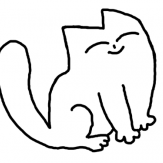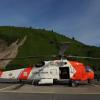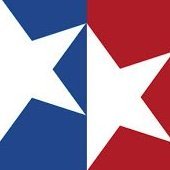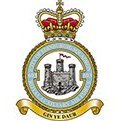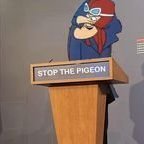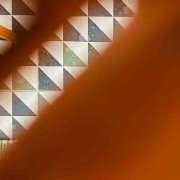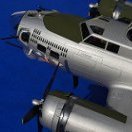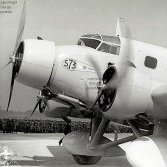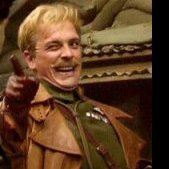Search the Community
Showing results for tags 'Revell'.
-
Last time I posted a NASCAR build was (I think) 2017... I started this one around the same time, then lost interest in all NASCAR modelling until about two months ago when I found this and all my others during a stash clear-out. There isn't very much to say about the build, I'm sure most builders of American Stock Cars will agree the construction is entirely predictable and formulaic, the only differences being the body shells and paint/decals. That said the early 2000's cars that Revell released are even more so as they're all related to their 'snap together' pre-painted range that were mainly sold through official NASCAR merchandise outlets across the US. Right, enough backstory, this is the less well known of the 2003 Chevy Monte Carlos driven by Kevin Harvick for that season featuring the Californian Funk Metal band 'Sugar Ray' (no I hadn't heard of them either), there aren't too many photos but I found a few, even better is to watch the end of that seasons' Richmond night race and how Ricky Rudd clipped Harvick, putting him in the wall with just eight laps to go, Harvick was running second at the time, Rudd was in third. The post-race 'altercation' was great TV. Paint here is Tamiya TS-14 Gloss Black straight from the rattle-can, when dry the larger areas were very carefully masked and then sprayed TS-21 Gold. Decals are by JWTBM, and date from 2004 - not sure if anyone reading this is connected with JWTBM, but if there is... you 'quality control' was fantastic, after twenty years the decals behaved perfectly. Four coats of Tamiya LP-09 lacquer clear sealed the decals and were left to fully cure for two weeks. Sanding and polishing-out took three days, and I'm VERY pleased with the final finish. So that's it, a toe back in the water of NASCAR modelling and I really enjoyed it. Already looking at a few of my old donor kits & decal options but got a couple of other projects I need to get finished first. Cheers from NZ, please feel free to comment, criticise or ask a question. Ian.
-
Joining with this kit, bought 2004 from an IPMS colleague for £4.99. The only one allowed a splash of colour I've just looked at the instructions. How has such an uninspiring aircraft become so successful? And as a compliment to this, I'm building a Revell X-32 JSF in the Project Cancelled GB.
-
Hi all, It's been a while since I last posted, but I finally got round to finishing and photographing my most recent build. Commissioned by Revell to be displayed on their stand at Scale Model World 2024, this is their most recent boxing of their lovely 1:72 Arado E.555, part of their new "P-Series" of kits. A kit first tooled up in the mid nineties, it still holds it's own today if you're a fan of Luft'46 subjects like I am. A bit of work on the leading edges but otherwise, everything went together without a hitch. Working with the Revell UK team, we came up with this "What If" scheme whilst utilising the existing decals provided in the kit, to show what can be done with a bit of imagination! I also used Coastal Kits Display Bases to give it some context of size in the images. Please enjoy these photos and any questions are welcomes and I shall answer when possible! Cheers!
-
Right folks, this has been a long time in the making. I started this back in summer last year, before my life took a few turns for the worst. Building this kit was only ONE of the tribulations... It's the Revell 1/144 kit, originally meant to be the Lufthansa version, but I wanted a British Airways Landor version. That meant buying an Airfix version for the correct decals and the engines, which turned out to be a waste of time as the decals were scuffed and the engines were pretty useless lumps. I ended up getting the Draw Decal set and some resin engines, and still had to rob the wheels from the Airfix kit as the Revell ones were mis-moulded. As General Melchett observed, it'd have been easier and cheaper to get the Dragon kit and replace the decals! Anyway, after much kitbashing, scratchbuilding, filling and sanding, the finished article is finally here. I was hoping for some decent weather to photograph it in outside, but as I'm off work this week that's a forlorn hope...so, kitchen table it is. Hope you like it: Now, what's next? Cheers, Dean
- 45 replies
-
- 26
-

-

-
I had to have this kit, even if it does not go exactly with my 1/72 Bundesmarine aircraft theme.. Unfortunately, the kit was kind of a pain in the you know what. A lot off the bigger parts (fuselage halves, wing section) went no together well and required an astonishing amount of filling and sanding - not doing a favor to the engraved panel lines. I had a whole lot of ideas about detailing the model. Most of them for the cargo bay. After realizing that you practically see nothing when the plane is completed, I only corrected the front wall (now BOTH toilets can be accessed ) added the urinals on the starbord side back (ok, reading this, it seems I am somewhat obsesses with powder rooms) and a few smaller things. Visible on the outside is one air-to-air refueling pod on the port wing. But only one, I skipped the other wing as I modified a D-704 buddy tank to look vaguely like the one Airbus is using and only had 1 - call it a test flight? Altogether, viewed from a bit of a distance the kit looks pretty realistic. Part of that is the amount of decals Revell included. I lost count, but I think close to 300? Each engince nacelle & propeller alone has over 40! So without further ado, here it is: Oh, and in case you were wondering: 1) No, the German Navy does NOT fly Eurofighters/Typhoons. But that doesn't mean I can build one, does it now? 2) Yes, the different position of the propeller blades is on purpose to show off the variations possible. 3) Yes, I corrected the broken front wheels later (the whole landing gear is somewhat skinny for the weight of the model). Now, as always, thanks for looking and all comments welcome. Cheers
- 26 replies
-
- 69
-

-

-

-

-
Rejoining with this Revell kit of the unsuccessful JSF candidate. Kit cost me £3.85 on Ebay in 2004. A build that compliments my X-35 Lightning build, in the F-35 Lightning STGB.
-
Here is the Revell A330-300 converted to a -200 and finished as OY-GRN “Norsaq” of Air Greenland. Norsaq was built in 1998 and delivered to Sabena as OO-SFP. She joined Air Greenland in 2002 serving as their flagship until retirement in February 2023 and replacement by A330-800 OY-GKN. Norsaq was subsequent sold for parting out. On her final flight from Copenhagen to Tucson she made a low pass over Greenland’s capital Nuuk and most of the population turned out to wave her off. Converting the Revell A330-300 to a -200 is theoretically straightforward. The -200 is ten frames shorter than the -300 and it’s easy enough to remove six windows ahead of the wing and four aft. I used the BraZ replacement nose (more of that in a moment) so at the front I just cut off the necessary length for it plus six windows. I had previously borrowed the kit’s fin for use on an A310 and I replaced it with a tall post-modification fin from BraZ which was warped and needed softening in boiling water to straighten it. Also the fairings at the base needed to be reduced in width by about 50%. I found this photo helpful for getting the fairings correct. The BraZ replacement nose was a saga in itself. The main issue was that it didn’t match the cross section of the Revell fuselage and if it had been assembled as intended there would have been significant steps at the top and bottom. I believe BraZ worked from the actual Airbus drawings so the chances are they are right and Revell are wrong but that doesn’t solve the problem. Again I used boiling water to soften the resin after which I bent the rear of the nose halves closer to the Revell cross section. I then superglued them together at the bottom after adding the Revell wheel well and a decent amount of weight. Once the bottom joint was set I wedged the top joint apart and glued the assembly to the fuselage using 5 minute epoxy while trying (not very successfully) to align the top and sides with the Revell parts. The result was not pretty as the photo shows but after gap filling (scrap plastic, superglue and baking powder), copious quantities of Milliput and numerous rounds of sanding it more or less passed the T.L.A.R. test. A further annoyance is that the BraZ panel lines bear no relationship to the Revell ones. I took the line of least resistance and just filled everything. Unfortunately using the BraZ nose also means you lose the kit’s nicely detailed forward baggage door but there isn’t much you can do about that. The original Revell A330 was issued with GE and PW engines but both are poor. Norsaq had PWs and I replaced the kit engines with LACI’s 3D printed ones (LAC144134). Small fairings and other details came from plastic strip and sheet. The satcom bump is by BraZ. Red paint is Halfords Hyundai Electric Red. Sources disagree about the colour of the wings. Drawdecal say grey with coroguard which is definitely wrong while Lima November say plain Airbus grey. However photos suggest strongly that they were actually white. After much staring at Airliners.net and JetPhotos (especially this image) I decided that white was indeed correct, a conclusion supported by the fact that Norsaq would have had white wings in her original Sabena livery. I therefore finished the wings, stabs and engine pylons with the usual Appliance Gloss White. Metallics are by Tamiya and Revell. Decals are a mixture of Drawdecal and Lima November, mainly the former. I added Authentic Airliners windows and a few bits and pieces from the spares box. Because of the design of the Drawdecal decals I had to overlay the AA cabin windows which inevitably were differently spaced so all 112 of them had to be applied individually, the sort of modelling job which makes me question my sanity. Never mind, we got there in the end and the conversion, which was spread over about eighteen months, was actually quite an enjoyable project despite the problems. The finished result isn’t perfect by any means but I’m reasonably happy with it. If nothing else the large red model is a bit different and shows the “all airliners are white and boring” nonsense for what it is. Since I began this model the Zvezda A330-300 has arrived on the market. In theory it should be a big improvement on the Revell kit although discussion on Airliner Cafe has flagged up an issue with the sit of the Trent engines. I have one on order and I’ll form my own conclusions before deciding whether to dispose of the remaining Revell kits in my stash or hang on to them. Although the Zvezda kit isn’t cheap it should produce an accurate A330-300 without the additional cost and hassle of a (very) badly fitting resin nose and expensive 3D printed engines. Thanks for looking and constructive criticism is always welcome. Dave G
- 12 replies
-
- 53
-

-

-

-
While waiting for bigger rockets (e.g. Mach 2 Vostok) to become available, I decided to increase my rocket arsenal by building a second Revell V2 in US service, this one depicting the test launch "round 3" from 1946. To make it a bit different from my Bumper 5 version, I added a Meillerwagen. As always: thanks for looking and all comments welcome! Here are my other space related builds: https://photos.app.goo.gl/DLrnifbiBdBnwxfF7 Cheers
-
I don't know anything about ships. I just built one
- 10 replies
-
- 21
-

-

-

-

-
- 10 replies
-
- 1
-

-

1/32 Revell spitfire mk IXc to IXe conversion question
moddedmodeler posted a topic in Aircraft WWII
Hi all, i have a 1/32 revell spitfire mk IXc and i was wondering if it was possible to convert it into an IXe . AFAIK AML does one for the tamiya kit but not for revell. Thank you all for your time -
The Revell 1/48 Eurofighter Typhoon “Black Jack” is a detailed model kit representing the Eurofighter Typhoon FGR.4, specifically the “Black Jack” scheme from No. 29 Squadron, RAF Coningsby. This kit, released in 2022, includes new decals and features 228 parts12. The “Black Jack” scheme debuted in September 2021 and is known for its striking design with a large roundel on the tail and stylized Union Jack segments on the main planes and canards3. This model is a re-boxing of Revell’s 2000 tooling. The biggest problem with this kit is laterally none of the parts fit together, this was a pain to build! lots of sanding, fettling and filling is required for this one, the finish however, if you're willing to put the time in the finished article can turn out very nice indeed and makes for a stand out piece. The detail is pretty good, the moulding is nice and clear with not much overspill. Instructions are typical of Revell, you need to read them 2-3 times first - they do seem to be the original instructions from the 2000 release. The decals, like the rest of the kit do not fit! especially the large underwing decals are a joke - they don't reach the end of the wings and they are about half an inch too long and hang off the back of the wing, There are a lot of left over parts included in the kit as well, but if you really want to arm this display jet to the teeth, you have the option! - Overall an absolute b*tch to put together, but a worthy challenge!
- 4 replies
-
- 15
-

-

-
- Eurofighter;
- Typhoon ;
-
(and 1 more)
Tagged with:
-
The first of my promised small but colourful builds will be this treble of F-18's, the F-18D finished as a Marines 'Wild Weasel' version and the F-18E and F-18G completed as Navy versions. Here are the supporting photos. by John L, on Flickr by John L, on Flickr Looking forward to starting these. John
-
It's that time of year again when I find all sorts of new projects making their way towards the workbench...! I know I have plenty on the go already, but most of these are awaiting paint which requires better weather - I spray outdoors and need warmer, drier conditions. As @Paulaero will understand, these other models are generally at least 95% built, which qualifies me to start on something new in the meantime! 😁 This build is partly a new challenge and a bit of repetition too. The new bit is refurbishing one of my older models and this will form the bulk of this thread. The repetition part is concurrently building two untouched Revell 767-300 kits, which I did here a couple of years ago and I don't see any point in documenting it here again! However, these kits will throw up a few challenges along the way (more on this when I get to those parts!), hence their inclusion into this thread. Let's start with the model to be refurbished. I would guess that I built it around 20 years ago, when my modelling skill set was rather more limited than it is now. It is the Revell 767-300, with RR engines and built to depict G-BNWA which I flew regularly at back in 2003. The model has been in the attic for years and I think it must have been dropped at some point too - luckily I still have most of the pieces: It's certainly been neglected and the attic did it no favours - it's covered in grime: The refurbishment will consist of the following tasks- 1. Open the fuselage up and fill the windows with Milliput 2. Removal of the damaged undercarriage and rebuild the model with the gear doors closed 3. Replacement of the missing windscreen (the only piece that I cannot find!) 4. Removal of the old paint and re-spraying with an accurate demarcation line and correct shade of blue 5. Production of custom decals to give the model a new identity To complete this introduction, the other two models in this build were purchased cheaply but with a few pieces missing. More importantly though, they both have the sprues for the RR engine option, so these will be built as BA aircraft. Here are the sprues: And another shot, showing the first task completed - Milliput is applied: It is well past its 'use by' date and quite dry and crumbly, but perfectly good enough for this job!
-
As part of my effort to clear my backlog of started kits I have dug out my Matchbox Spitfire. I started this literaly decades ago, but didn’t get far. I have looked at it occasionally, but no action. Then I bought some Xtradecal decals for it, SAC MkIX undercarriage legs, MasterCasters interior, Master gun barrels. Finally I found out about the Grey Matter correction set for the nose, which of course I immediately ordered on a wim. Having now spent about ten times what the original kit cost, guilt has led me to this, my first WIP. It will not be a tutorial, I am not that good, it will not be a guide to the ultimate accurate Matchbox Spitfire, but posting about it will serve to prod me to get it built. With a little luck, at about the halfway point, somebody will announce a new accurate Mk 22/24 for you guys waiting for one. We will start with the nose, the Grey Matter nose is one seriously large accurate lump of resin. I may scratchbuild the u/c legs out of brass because even the SAC legs might fold under the weight! It also might be the first Spitfire build to need weight in the tail to prevent it becoming a nose sitter. You can see the difference with the kit item. The panel lines look much more to scale than the Matchbox lines-lol.
- 121 replies
-
- 11
-

-
Hello Britmodellers, This Revell F-104G was built more or less oob, except for the two AIM-9J's on the fuselage launching rails, which came from the Hasegawa Weapons Set III. Thanks for watching! Luka
- 14 replies
-
- 47
-

-

-

-
First serious bit of modelling I've attempted in about forty years – so guess that makes me a newbie! My first experience of photoetch, acrylics, airbrush... you name it. So I wanted to do a subject I felt a connection to, and something that would stretch me to the max. So it's Revell's 1/32 Schnellbomber which will assume the guise of 4D+DH 'Dora Heinrich' of 1.KG30. This Ju 88A-1 fell to the guns of 603 (City of Edinburgh) Squadron on 16/10/39 during a Luftwaffe raid on RN ships in the Firth of Forth. 'Dora' was the first enemy bomber downed by the RAF over the British mainland in WWII, and was on the receiving end of the first ever Spitfire victory. I was born by the Forth, and have lived half my life on its banks, my family have worked for generations on its waters and in its docks and I live just a few miles from where 'Dora' ditched almost eighty years ago. So I thought I'd make her the first half of a 1/32 'Dogfight Double'. Eventually I'll get around to tackling her nemesis – XT-A 'Stickleback' a MkI Spit of 603 Squadron. Over a year in, having too much fun, here's some (unfinished) pit shots. Apologise for quality – taken with an iPhone4 Cockpit side walls, still needs wiring/some piping added Eduard PE, Aims and homemade decals Floor and curtains printed on inkjet Pilot seat, control column and BZG2 Bombsight
- 54 replies
-
- 29
-

-
Another old one from the stash. It's pretty much all OOB apart from the odd tweak. I'll be doing the CAG version from the box artwork. So, the cockpit is done. Drybrush, Posca pens and transparent green with PVA over the top. This must of been an old 'B' version that got upgraded as the screen is round. Or Revell fluffed it... The seats are in as a dry fit. The Dspiae clamp is great to work with. I like their kit. And a bit of weight in the nose to make sure it won't try to sit on its tail.
- 16 replies
-
- 10
-

-
First work-in-progress post here—hi all! After being tempted many many times and growing up with a real van on my street, I decided to take the plunge on this kit from Revell. It’s proving to be an interesting fun project, with the expected challenges on the front doors and fitting as mentioned by many others. Before starting the build I did quite a bit of research even to determine what model year this kit is supposed to be since it’s not mentioned in the box! 1962 was the conclusion so far but I’m still researching more to cross reference details, etc. One of the things I really love is spending time looking at photos of the real van, nerding over many details and deciding what modifications I can make to the kit, to have it closer to the real thing. As I started working on the front cabin, one the things I immediately wanted to change was the area below the seats. It’s completely flat on the kit and missing all the great metal work of the real van, despite the nice grooves on the plastic to reference the real metal moulding and the nice spare tire area behind the front seats. I wanted to add the raised area above the wheels also to have a nice edge for front doors as in the real van, rather than it being level had I assembled the kit as standard. I filled in some of the moulding grooves with putty below the front cabin now that they will be visible because I cut out the central area to add extra metal grooves and the storage/toolbox the real van has below the front seats. I know these might be silly details for some but what can I say, I’ll know they are there and it’s what gives me pleasure when assembling these kits I’m happy with how the extra details are looking so far, making the front cabin more real and interesting. I might modify the front seats with a custom made hinges mechanism so they can tilt forward like in the real van for access to the storage/toolbox area and spare tire. I’ll post updates as work progresses and I continue adding more details to the kit and modifying it… I’m not really happy with how the front doors in this kit go all the way up to the roof line but on the real van then don’t go that far up so that might be my next rabbit hole
- 30 replies
-
- 13
-

-
Hello everyone, I'm planning to purchase the 1/700 scale model of the Queen Mary 2 by Revell towards the end of the year and I need some advice regarding the paints and tools I'll need for this project. Since I don't own an airbrush, I'm looking for spray paints, preferably from Tamiya. Could you recommend the specific colors I should use for this model? Also, I'm interested in enhancing the detail of my build. Does anyone know if there are any photo-etched parts available for this kit? I've tried searching but haven't been able to find any. Thanks in advance for your help! Best regards, Szymon
- 1 reply
-
- Revell
- Queen Mary 2
-
(and 1 more)
Tagged with:
-
Afternoon all, Latest completion from me - Revell’s 1/144th scale Boeing 747-400 with DrawDecal’s British Airways decals. It’s been built out of the box, other than my usual mod to these kits in adding some height on the cockpit crown area with some Milliput to correct the profile. Although it’s getting a little long in the tooth now, the kit still builds reasonably well once excess flash is removed! I was really sad when BA retired the 747 - not only is it one of my favourite commercial aircraft but I’d flown on them more than any other type and thought I’d do my own little tribute to ‘The Queen of the Skies’. The real thing was my last 747 flight when she brought me back from Australia once… the ‘Kangaroo Route’ is now 777 or 787 and it’s not quite the same. Long live the Queen! All the best, Tom
- 29 replies
-
- 78
-

-

-
- Boeing 747
- Revell
-
(and 1 more)
Tagged with:
-
Below some images of my recently finished 1:72 Revell Panzerhaubitze 2000. I received this as a review kit from IPMS Netherlands and an article (in Dutch) was published in the last issue of MIP. The kit has great detail out of the box and is easy to build. Minor issues are the closed hatches on the turret and the moulded on tools. I thought the decal choice to be a bit bland (Bundeswehr and Ukrainian Army), so I opted for Lithuanian markings instead. I used NATO colours from Tamiya's TS spray can range, with details picked out in Vallejo colours. I hope you like it. Peter


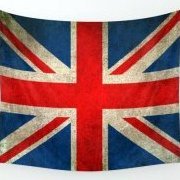
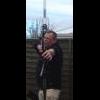
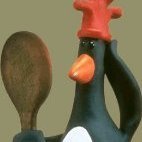
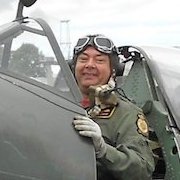
.thumb.jpg.ad2b820bfdebfdb8541e9255a05f38c7.jpg)
